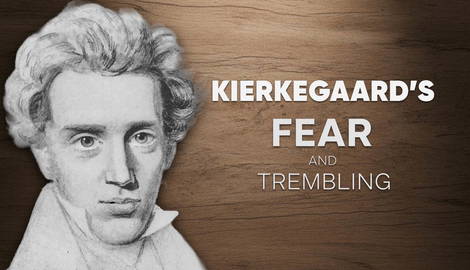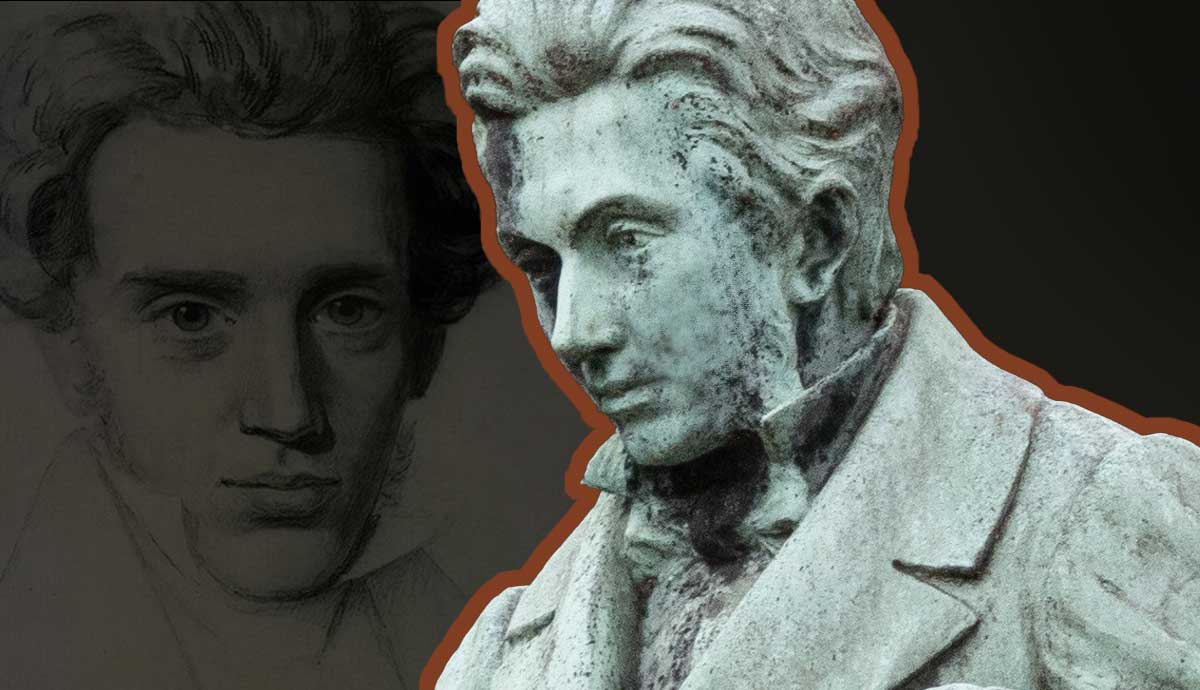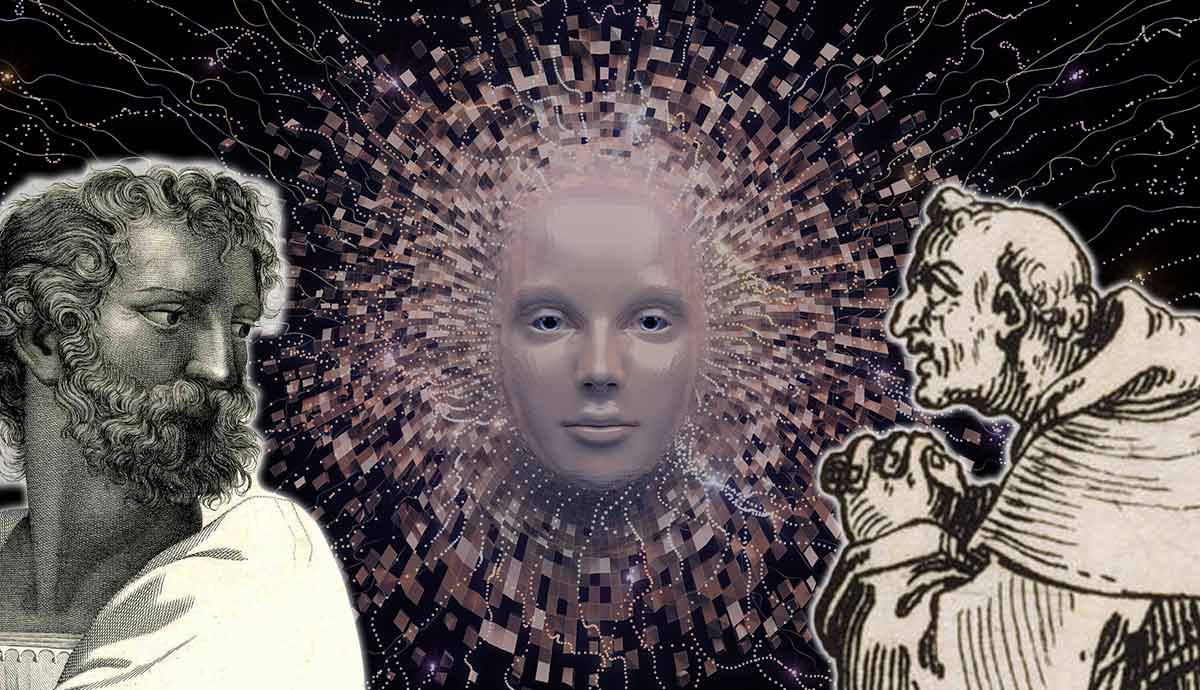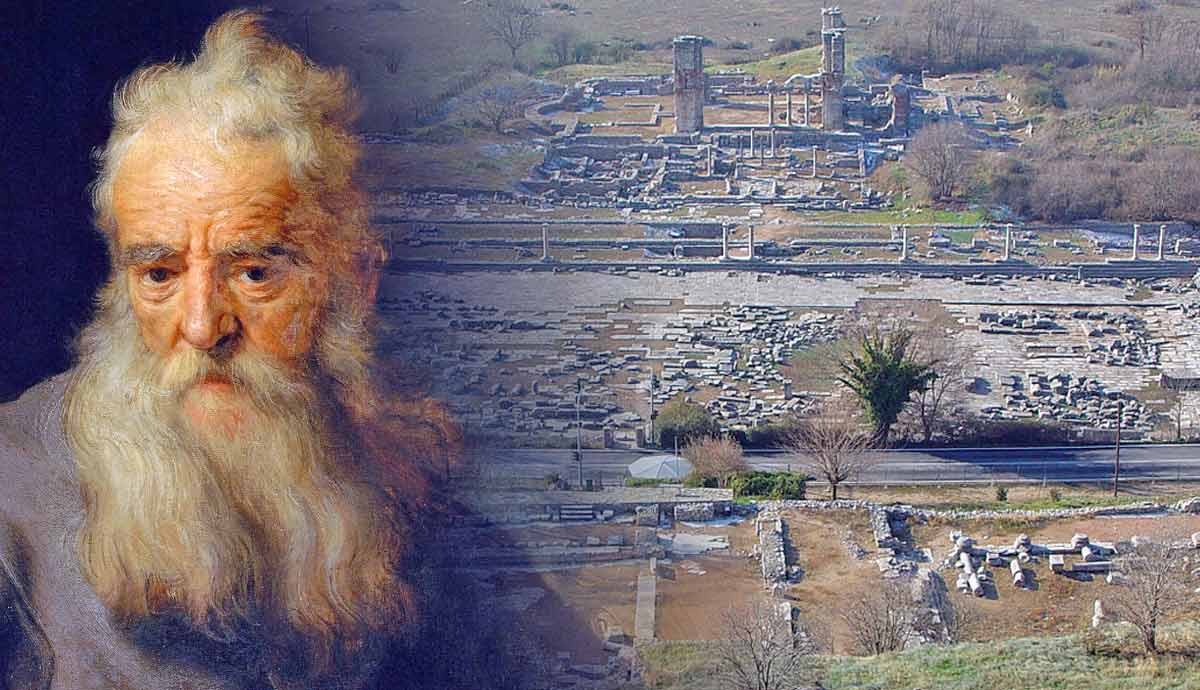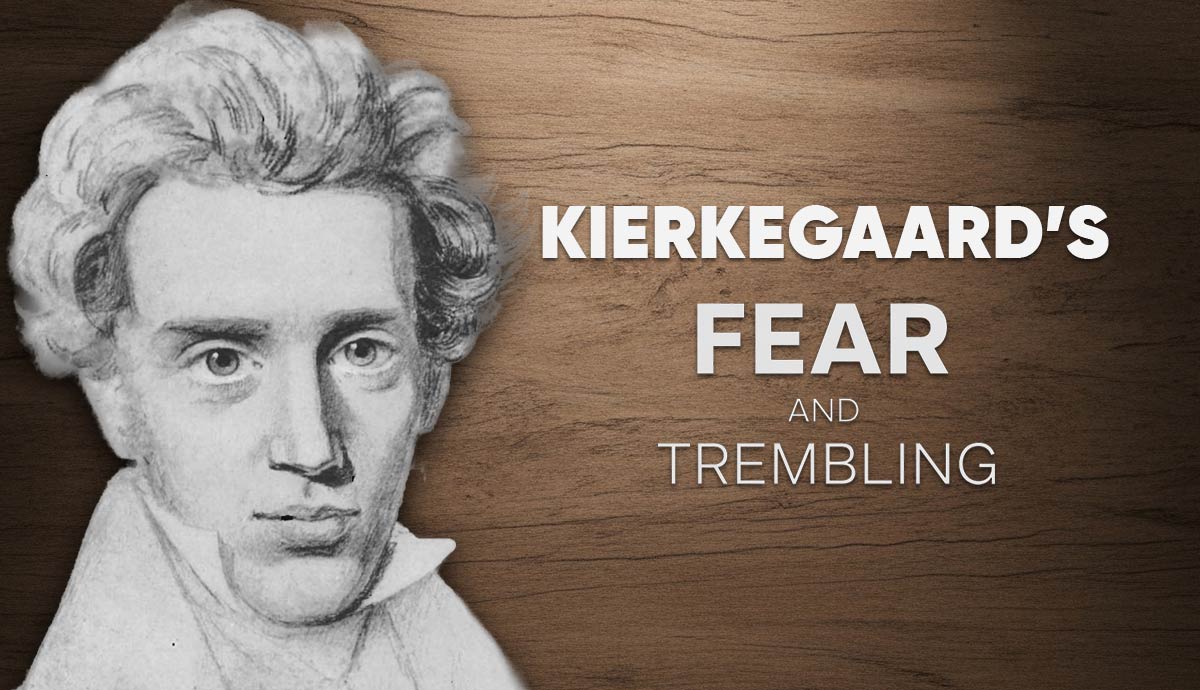
Fear and Trembling has become required reading for anyone interested in existentialism or Biblical exegesis. In this short text, Kierkegaard poses several challenging and complex philosophical and theological ideas. Here, we examine three key ideas expressed in the text: the teleological suspension of the ethical, the leap of faith, and the Knight of Faith. The aim of this article is to provide readers with a suitable foundation to tackle Fear and Trembling on their own.
Who Was Søren Kierkegaard?

Søren Kierkegaard was born in 1813 to a wealthy family in Copenhagen, Denmark. The family wealth was such that Kierkegaard would never have to work for a living and could afford to publish his works independently. This freedom gave him the opportunity to think and to write, both of which were his passions.
Indeed, in 1841, Kierkegaard called off his engagement to a woman he loved, Regine Olsen, in part because he believed his passion for writing would make him an unsuitable husband. He loved Olsen, and this love was reciprocated, so the decision to end their relationship was a difficult one. As we shall see, there are passages in Fear and Trembling that allude to the breakup.
One of the many benefits of his financial independence was that Kierkegaard was never required to submit to a publisher’s demands to censor his work or make it more accessible. Neither was he dependent on book sales to make a living. This meant that Kierkegaard was, for the most part, free to say whatever he pleased in his books. His work never received any official censorship; however, he was criticized in the literary press.
Indeed, a Danish satirical paper called The Corsair regularly lampooned Kierkegaard not just for his works but his personal style and mannerisms. Partly brought on by himself—Kierkegaard goaded the paper into “scolding him”—this period in his life is known by scholars as “the Corsair affair.”
Although Kierkegaard was free to write unfettered by the need for money, he was strongly influenced by his family. In particular, his father, Michael, was deeply religious and deeply melancholic. Under the influence of Michael Kierkegaard, the young Søren had a stern and pious upbringing. This undoubtedly contributed to his strong religious beliefs. Let us turn now to Kierkegaard’s most popular Christian work.
Background on Fear and Trembling

The title of Kierkegaard’s text comes from a letter written by St. Paul to a group of believers living in the Roman colony of Philippi around 49 CE. In Philippians 2:12, we read the following: “Therefore, my beloved, as you have always obeyed, not as in my presence only, but now much more in my absence, work out your own salvation in fear and trembling.”
Fear and Trembling (1843) can be understood as an extended meditation on the Biblical story of Abraham’s sacrifice of Isaac. Primarily, Kierkegaard is interested in ethics. In particular, the idea that God could require a person to do something unethical. In the text, he asks the question of whether there can be a “teleological suspension of the ethical.” We will look at this idea in more detail below, but for now, we can simply concern ourselves with Abraham’s willingness to obey God and kill his only son, Isaac.
If a man entered a church today and told the congregation that he had just murdered his son on God’s command, he would be considered criminally insane. However, in Christianity, Abraham, who attempted to do exactly this, is considered the father of faith. Indeed, Abraham’s willingness to sacrifice his son is held up as an exemplar of faith. So why is it that anyone who followed (or believed they were following) Abraham’s example today would be considered insane?
The answer is that no one would believe that God would command such an act. But, as Kierkegaard argues, if they believe what they read in Genesis 22: 1-19 then they must believe that God would issue such a command. For him, Abraham is the exemplar of faith because he both believed and trusted God. The “fear and trembling” refers to Abraham’s possible state as he obeyed God.
Abraham’s Faith

In the first section of Fear and Trembling, Kierkegaard offers four different versions of God’s call upon Abraham to sacrifice his son Isaac. In Genesis 22: 1-19, Abraham is instructed to take his son to Mount Moriah and sacrifice him as a burnt offering.
Without question, Abraham takes Isaac to the designated place. Once the altar is made, Abraham binds Isaac and is about to sacrifice him when God calls out for him to stop. A ram, caught in a nearby thicket, is sacrificed in Isaac’s place. Christians celebrate Abraham as the father of faith due to his absolute trust in God. However, Kierkegaard believed the passage revealed more.
The account in Genesis says nothing about Abraham’s or Isaac’s feelings or mental states. Kierkegaard offers four alternative versions of what might have happened:
- Abraham is concerned that Isaac will blame God and lose faith, so he pretends to be mad.
- Abraham cannot bring himself to sacrifice Isaac, but when he sees a ram, he sacrifices that instead.
- Abraham goes to the mountain alone and begs God’s forgiveness for believing he was to sacrifice Isaac.
- Abraham, knife in hand, cannot bring himself to harm his son and loses his faith in God.
Abraham’s loss of faith in these four examples is intended to show the failure of rational thought in the religious sphere. For Kierkegaard, this silence presents the opportunity to take a leap of faith. Faith, for him, is belief in God not despite the lack of rational evidence but because of it.
Teleological Suspension of the Ethical

Teleology comes from the Greek words telos, meaning “end,” and logos, meaning “explanation” or “reason.” To simplify a complicated idea, we can think in terms of means and ends, and in particular, the idea of ends justifying the means.
Almost everything we do is with an end, an aim, or a goal in mind. This means that the way we go about achieving our ends is almost always justified by appeals to the worthiness of the ends. Put simply, when asked why you are doing something, the usual response is that it will help you get what you want.
For example, someone might see you rushing through your breakfast and ask why you’re not eating properly. Here, you might reply that you’re running late for work. Your goal or end is to get to work on time, and you justify eating quickly as a means to this end. A far less trivial example of means justifying the ends would be a defence of using nuclear weapons to bring about the end of a war.
When Kierkegaard talks about a teleological suspension of the ethical, he is referring to temporarily setting aside ethics in order to achieve a certain end. That is, there is something that needs to be done to achieve a goal, so we can temporarily set aside ethical concerns.
In this particular instance, Kierkegaard is discussing the suspension of ethics in order to achieve God’s end. In his example, Abraham must sacrifice his own son because God requires it. The killing of Isaac is obviously unethical, but it is the means to whatever ends God has in mind.
When Kierkegaard asks if God can command us to do something morally wrong, he is asking whether there can be a teleological suspension of the ethical.
The Leap of Faith

The idea of the leap of faith is one of Kierkegaard’s most important concepts. Abraham takes a leap of faith when he chooses to obey God and sacrifice Isaac. Today, we often hear the expression “leap of faith” used to express the idea that someone ought to throw themselves into an uncertain endeavor in the hope that everything will turn out well. Here, there is no proof that things will work out; the individual must simply jump in with both feet.
Kierkegaard’s concept of the leap is less dramatic than that. The idea of leaping suggests an expenditure of energy to propel a person forward; however, for Kierkegaard, the leap is simply the decision to put one’s faith in God. The first step is what he calls “infinite resignation.”
Kierkegaard believed that the ideal life for Christians was one of “resignation.” This means giving up all personal desires in order to serve God. The hope is that after this resignation of desires, all that was lost will be restored by God. This faith that all will be restored is part of the leap of faith.
For anyone around an individual who has undergone this renunciation, it is most likely that they will be unable to detect any difference in them. Resignation is the first of two steps necessary for becoming what Kierkegaard calls a “knight of faith.” The second step is the leap of faith.
Why did Kierkegaard believe the leap of faith was necessary?
Kierkegaard did not believe that God could be understood rationally. That is, the existence of God and what it is he wants from us cannot be discovered through human reason. Instead, Christians must rely on their faith. What this means is that, for Kierkegaard, belief in and faith in God are personal choices made by the individual.
The Knight of Faith

For Kierkegaard, the Knight of Faith exemplifies the religious way of life. Just like those who have committed themselves to infinite resignation, they are indistinguishable in appearance from others. It is important to note that while Kierkegaard uses the term “knight,” it should be understood by this that women, just as easily—or perhaps it would be more accurate to say, with just as much difficulty—can become knights of faith.
We have seen that the two conditions for becoming a knight of faith are infinite resignation and the leap of faith. Let’s look at both of these in relation to Abraham.
In the first section of Fear and Trembling, Kierkegaard reimagines Abraham’s response to God’s command to sacrifice Isaac in four different ways. In each, he fails to show faith in God. It is important to note what Abraham’s faith consists of. He does not simply obey God’s command, but, first and foremost, he has faith that it is God who is issuing the command.
Faith for Kierkegaard is not simply a belief, an inner state of mind, but an action. For him, faith is doing something. Abraham also has faith that what he sacrifices will be returned to him. God previously told Abraham that through Isaac, he would father many nations. If Isaac is killed before he fathers children, how can this be possible? There is not a rational answer, but Abraham takes the leap of faith that God will fulfil his promise.
Abraham is, for Kierkegaard, a model of the knight of faith (and how Christians should aspire to live) because of his infinite renunciation, including a willingness to sacrifice his son, and his leap of faith that God would fulfill his promise.
